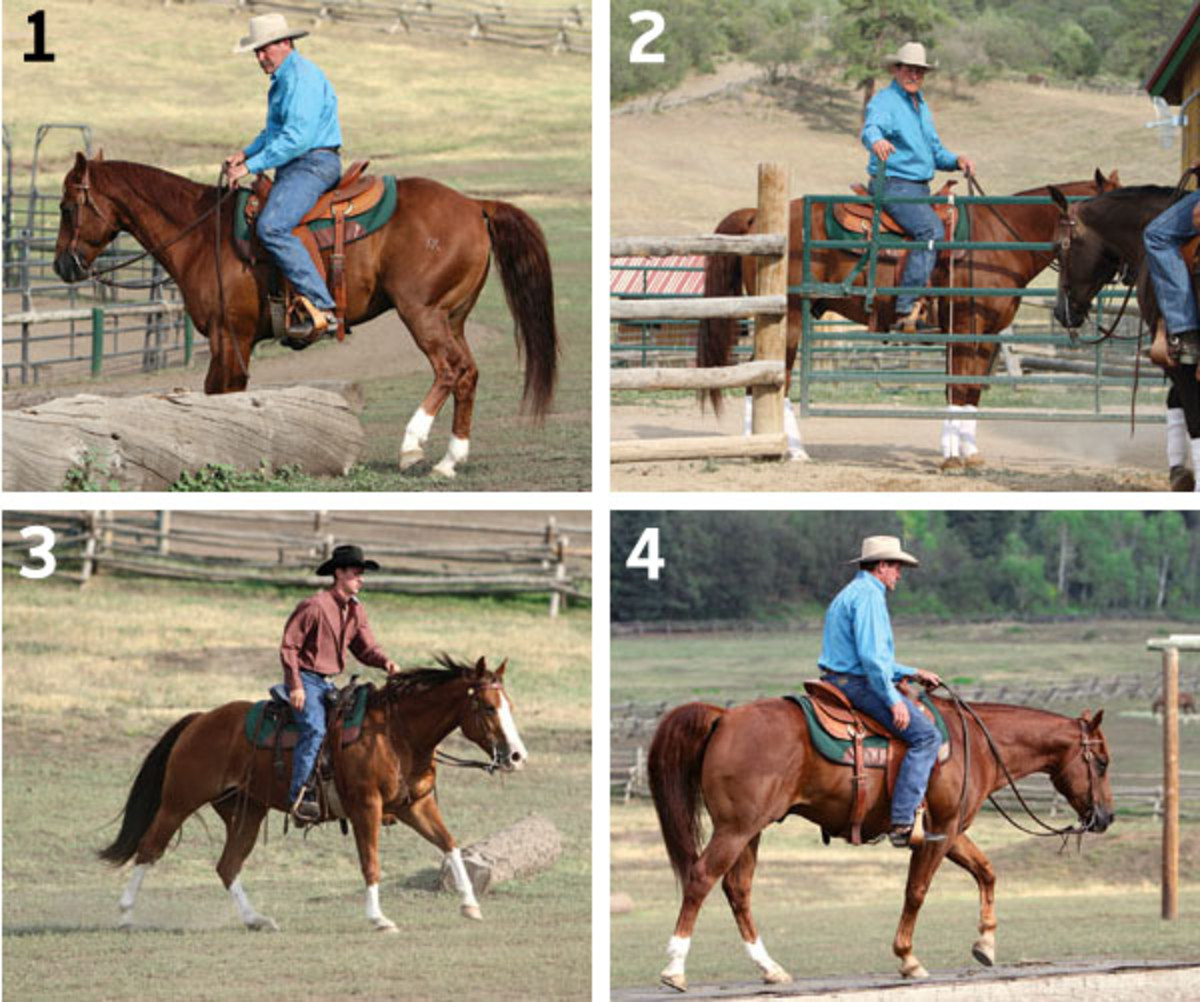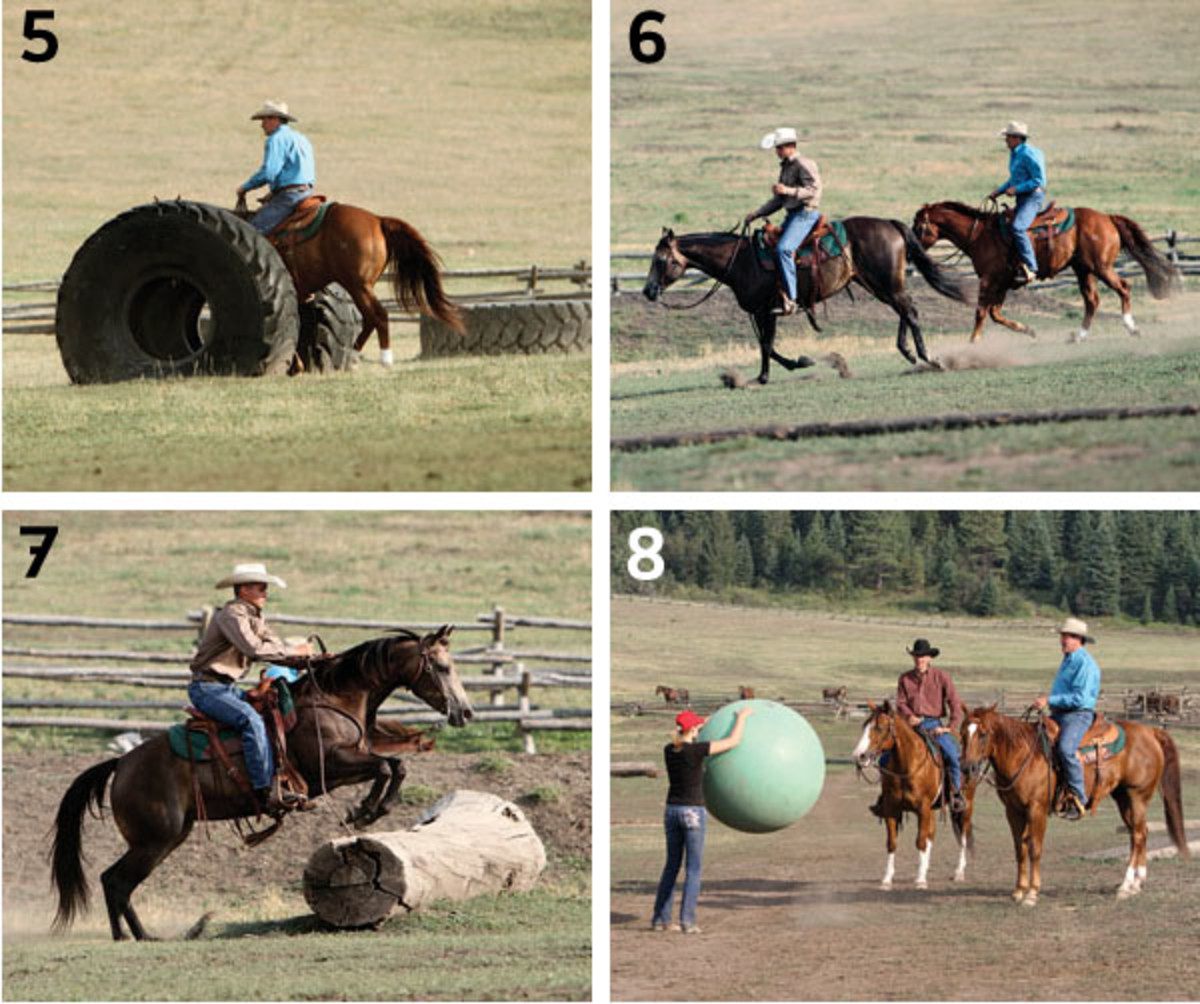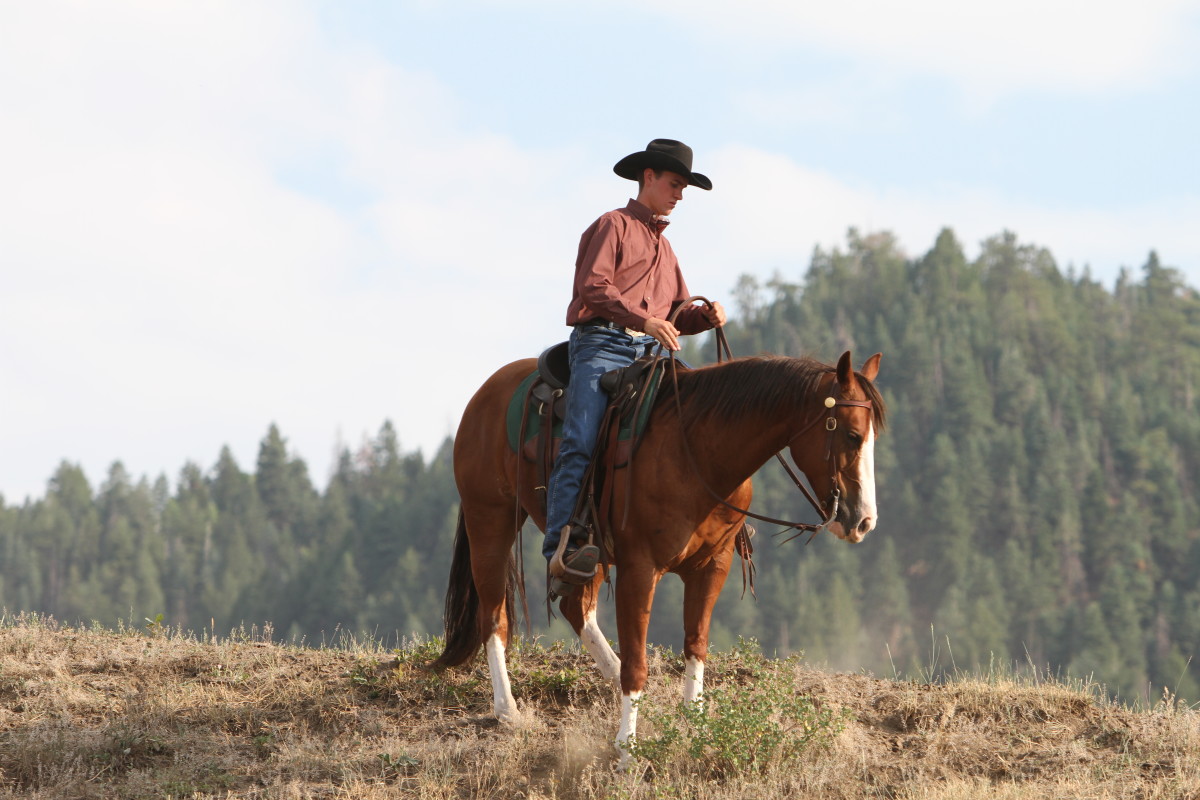Lesson Objective
A trail ride does a world of good for horse and rider, whether or not they compete in judged or timed events. Preparation ensures that it’s a positive experience for everyone.
Some people think that trail riding is just about saddling up, jumping on, and heading out. Sure, you can go about riding that way, but you’re not going to get the most out of your horse, nor will you get as much out of your ride. Proper preparation means that you’ll have a safe, enjoyable ride, and you and your horse might just learn a few new things in the process.
Here my assistants and I will demonstrate nine points to check before you hit the trail. We’ll do this in an open area with natural obstacles that are close to home and each horse’s comfort zone. After all, who wants to find out what their horse can’t do way out on the trail?
1. Sidepass. A sidepass requires simultaneous control of your horse’s front end and hindquarters. Having that control with your hands and legs increases your horse’s responsiveness, as well as your confidence. This is also great preparation for opening and closing gates.

2. Work a gate. More than likely, you’ll encounter some sort of gate on your ride. Be sure that your horse will understand his purpose by first working on it at home.
3. Check all gaits. Preparation is everything—ride your horse in every gait to ensure that you have relaxation and control, no matter what speed you’re traveling. This also warms up your horse’s muscles, which is necessary to prevent injury.
4. Practice crossings. Introduce crossings at home so you can work on your horse’s fears before you’re miles from home on a trail, in an unfamiliar setting. Take him across a “bridge” where he’s comfortable and knows his environment. Teaching your horse to cross over a tarp is also a good simulation.
5. Encounter objects. Will you see giant tires on a trail? Maybe not. But you’ll likely run into large bushes and rocks that could spook your horse. By exposing him to all sorts of objects at home, whether typical trail-ride obstacles or not, you build his confidence in himself and in you when encountering new things on the trail.

6. Move away from the herd. Ride with companions to test your horse’s manners around trail-mates, but also be sure to ride away from them. You want your horse to be more confident and comfortable trekking alone without being herd-bound.
7. Prepare for challenges. If you’re an experienced rider and will travel a challenging trail, practice negotiating obstacles, including jumps (fallen logs) that you might encounter along the way.
8. Be ready for spooks. Anything that comes bounding out on a trail is sure to spook a horse, whether it’s a mountain lion or a tumbleweed. A good way to prepare for those situations at home is by bouncing a large ball around your horse. It won’t totally ensure that he won’t spook, but it will build his bravery and you’ll both be better versed in handling a spooky situation, should you encounter one on the trail.
9. Work on hills. Practice your skills on a hillside to challenge yourself and your horse. You never know what you might have to do to maneuver a hill! Work on turns, short sidepasses, backing, and stopping.

Pat Parelli and his wife, Linda, are the founders of Parelli Natural Horsemanship and present major seminars and demos around the world. Learn more about their philosophy and check their schedule of presentations at parelli.com.







